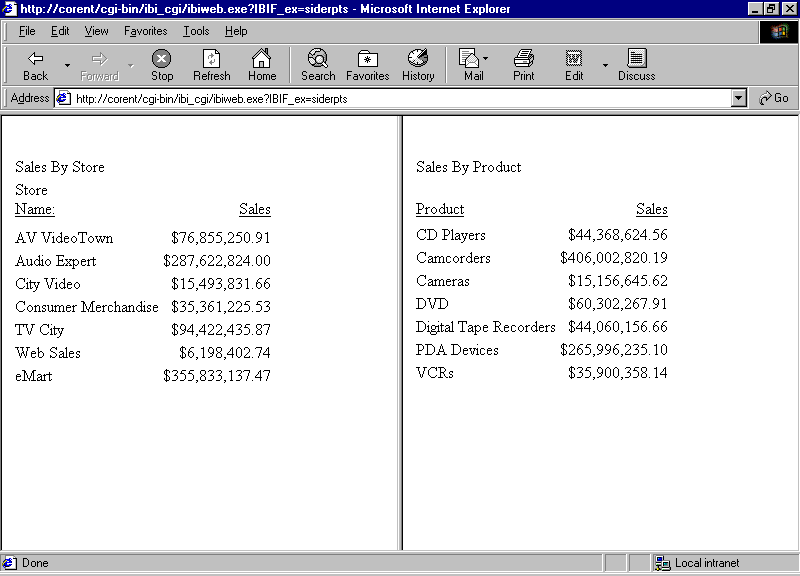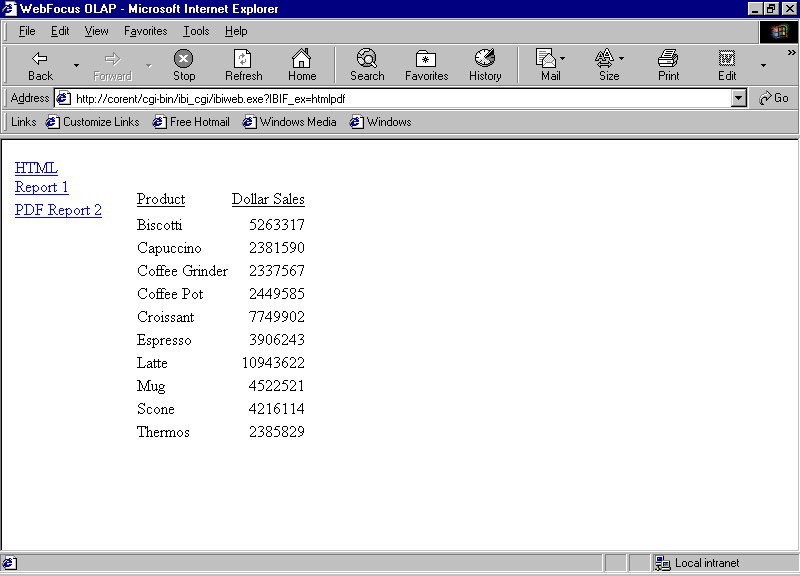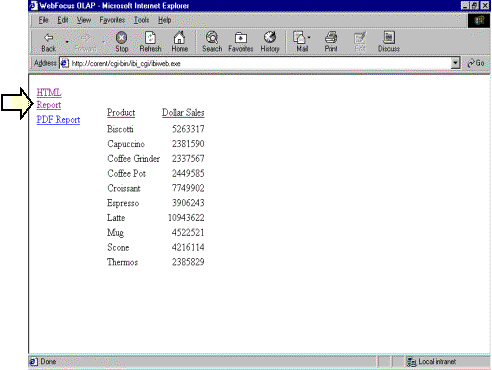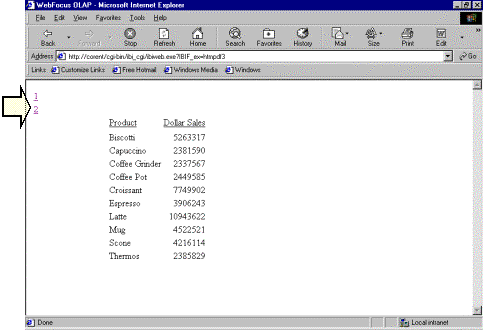Syntax: How to Control Multiple Reports From a Hyperlink
<A HREF="/alias/WFServlet?IBIF_ex=report1[&var=value[&var=value]...]"> text</A> <A HREF="/alias/WFServlet?IBIF_ex=report2[&var=value[&var=value]...]"> text</A>
where:
- alias
-
Points to the directory in which the WebFOCUS Client is located. An application or web server uses an alias to provide a logical name for a physical directory. The WebFOCUS default alias is ibi_apps. It is customizable during the WebFOCUS Client installation from which it is then configured..
To call WebFOCUS on another web server, specify a fully qualified URL that includes the server name and port of the application or web server, For example
<A HREF="http://servername:port/alias/WFServlet?IBIF_ex=report1[&var=value[&var=value]...]"> text</A> <A HREF="http://servername:port/alias/WFServlet?IBIF_ex=report2[&var=value[&var=value]...]"> text</A>
- servername
-
Is the name of the application or web server on which WebFOCUS is installed.
- port
-
Is the port on which the server is listening
- report1,report2
-
Is the name of the procedure to run.
- var=value
-
Is a WebFOCUS Client variable and its corresponding value.
You can pass more than one variable-value pair, but do not include a space between pairs. Use an ampersand (&) as a delimiter to separate each variable-value pair. A value can be a maximum of 80 characters long.
If a value contains an embedded blank, substitute a plus sign (+) or the characters %20 for the blank.
For a list of variables and valid values, see WebFOCUS Client Variables.
- text
-
Is the text on the launch page that serves as the hyperlink that runs the procedure.
Example: Displaying Two Reports With an Index Value
The following is an example of displaying two reports with an index value.
- Create a procedure
named TWORPTS, which consists of two requests. The first generates
a report on total dollar sales; the second, on total unit and dollar sales.
Procedure:
TABLE FILE GGSALES SUM DOLLARS BY PRODUCT ON TABLE SET PAGE-NUM OFF ON TABLE SET STYLE * TYPE=REPORT, GRID=OFF,$ ENDSTYLE END -RUN
TABLE FILE GGSALES SUM UNITS DOLLARS BY PRODUCT ON TABLE SET PAGE-NUM OFF ON TABLE SET STYLE * TYPE=REPORT, GRID=OFF,$ ENDSTYLE END -RUN
- Create a launch
page named TWOLNCH. It contains a hyperlink that calls the WebFOCUS
Servlet and passes it the name of the procedure to run. It also
sets the variables that provide an identifier (Sales Analysis Report)
and sequence number (1 and 2) to each report.
Launch Page:
<HTML> <BODY> <A HREF="/ibi_apps/WFServlet?IBIF_ex=tworpts &IBIWF_mreports=index&IBIWF_mprefix=Sales+Analysis+Report"> Run report.</A> </BODY> </HTML>
- Publish the procedure and launch page using App Studio.
- Run the launch
page in the browser, and click Run report to
receive the report on total dollar sales:
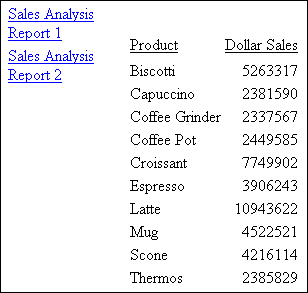
Click Sales Analysis Report 2 for the report on total unit and dollar sales:

